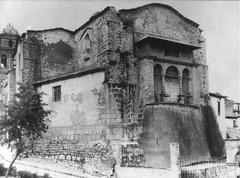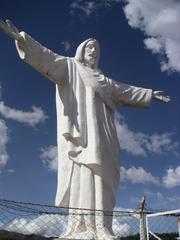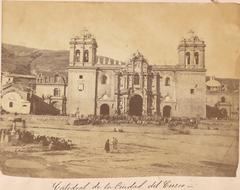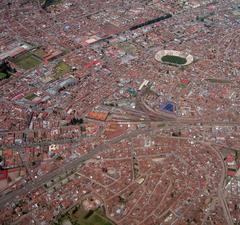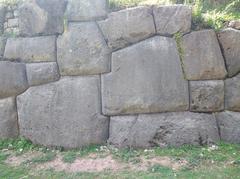Arco de Tica Tica, Cusco, Peru: Visiting Hours, Tickets, and Travel Guide
Date: 14/06/2025
Introduction
The Arco de Tica Tica stands as a striking blend of Cusco’s Inca legacy and colonial history, serving as a symbolic gateway to the city and a testament to the region’s enduring cultural identity. Once known as Uroscalla in Quechua—“the place from where the sacred city is lost from view”—the arch has, for centuries, marked the ceremonial entrance and exit to the heart of the Inca Empire. Over time, it has transformed from a ritual threshold to a colonial aqueduct and, later, an integral part of the city’s modern urban landscape. Today, the Arco de Tica Tica is a vibrant focal point during local festivities, an architectural marvel, and a welcoming landmark for visitors exploring the rich heritage of Cusco.
This guide provides everything you need to know for your visit: historical context, architectural features, practical information on access and tickets, travel tips, nearby attractions, and frequently asked questions. For further details and travel planning, consult resources such as the Municipalidad Distrital de Poroy, Kiddle, and Salkantay Trekking Cusco Travel Guide.
Table of Contents
- Introduction
- Historical Context and Significance
- Visiting Information
- Frequently Asked Questions
- Conclusion
- References
Historical Context and Significance
Inca Origins
The site now known as Arco de Tica Tica was a ceremonial gateway during the Inca period, called Uroscalla. It served as a point of reception and farewell for Inca dignitaries and traveling nobles, where ceremonies of greeting and departure occurred with flowers and music. Additionally, the site functioned as a control point along the Chinchaysuyo road, one of the four main arteries of the Inca road system, reinforcing Cusco’s administrative and ceremonial importance (Municipalidad Distrital de Poroy, Kiddle).
Colonial Transformation
Following the Spanish conquest, the area was transformed with the construction of the Arco de Tica Tica in 1791, by the order of José de la Portilla, then Intendant of Cusco. The arch also functioned as an aqueduct, channeling water from the Tica Tica area to the city. The Spanish adaptations reflected both practical needs and the desire to imprint colonial identity on a site of Inca significance (Kiddle).
Architectural Evolution
The original structure featured three semicircular arches crafted from andesitic basaltic stone, lime, and mortar, typical materials of Cusco’s colonial architecture. In the early 20th century, modifications were made to accommodate the Santa Ana railway, resulting in a central wall and two arches—one for the railway, one for pedestrians. A cross crowns the arch, symbolizing the fusion of Andean beliefs and Catholicism (Kiddle, Mapcarta).
Social and Urban Role
The arch has long been a site of civic and ceremonial importance, anchoring processions and community gatherings, particularly during major festivals like Inti Raymi and Corpus Christi. Its location, once on the city’s edge, is now integrated into urban Cusco but remains a threshold between the city center and the greater Andes (Municipalidad Distrital de Poroy).
Heritage Status
Recognized as a national and international monument, the Arco de Tica Tica is part of the Zona Monumental del Cusco and has been included in the UNESCO World Cultural Heritage Site since 1983, as well as the Qhapaq Ñan, the Inca road network (Kiddle).
Symbolic Importance
The arch embodies the blending of indigenous and colonial histories, acting as a ceremonial threshold and a physical reminder of Cusco’s cultural transitions. It continues to serve as a symbol of welcome, farewell, and community identity, especially during significant rituals and festivals (Machupicchu Terra).
Visiting Information
Hours
Arco de Tica Tica is accessible as an open-air monument 24 hours a day, 7 days a week. Early mornings and late afternoons provide the best lighting and fewer crowds for photography and exploration.
Tickets & Accessibility
- Admission: Free of charge. No ticket required.
- Accessibility: The monument is outdoors with pedestrian pathways. Some surfaces are uneven. The area is generally accessible to visitors with limited mobility, though assistance may be helpful in certain areas.
Getting There
Located in the Tica Tica neighborhood within the Santiago district, about 5 km from Cusco’s historic center, the arch can be reached:
- By taxi (15 minutes from the airport)
- By local bus (combis run regularly)
- On foot (30–40 minutes from Plaza de Armas, offering a scenic walk through local neighborhoods)
(Salkantay Trekking)
Nearby Attractions
- Poroy Train Station: Gateway to the Sacred Valley and Machu Picchu
- Sacsayhuamán: Majestic Inca fortress
- Coricancha: Temple of the Sun
- Plaza de Armas and San Pedro Market: Cultural and culinary hubs
- Apukunaq Tianan: Modern stone sculpture ensemble inspired by Inca mythology
Guided Tours & Events
Local operators include the arch in city walking tours, focusing on architectural and historical highlights. The arch features prominently in festival processions during Inti Raymi and Corpus Christi. For festival dates and guided tour availability, consult local tourism offices or Salkantay Trekking.
Photography Tips
- Visit during early morning or late afternoon for soft, golden light.
- The north side of the arch frames the cityscape and Andean peaks.
- Wide-angle shots capture both the arch and bustling street scenes.
- Respect local customs and ceremonies when photographing during festivals.
Frequently Asked Questions (FAQ)
Q: What are the Arco de Tica Tica visiting hours?
A: The monument is accessible 24/7 as an open-air site.
Q: Is there an entrance fee?
A: No, visiting the arch is free.
Q: Is the arch accessible for people with disabilities?
A: The area is generally accessible, though some sidewalks may be uneven. Taxis can drop visitors directly at the site, and ramps are available nearby.
Q: Are guided tours available?
A: Yes, many city walking tours include the arch, especially during festival periods.
Q: When is the best time to visit?
A: The dry season (May–September) offers the best weather; early mornings and late afternoons are ideal for photography and fewer crowds.
Q: Are there facilities nearby?
A: Restrooms are limited; facilities are usually available in nearby cafes or restaurants. Street vendors and small shops offer snacks and drinks.
Conclusion
Arco de Tica Tica is much more than a stone arch—it is a living symbol of Cusco’s unique heritage, bridging ancient Inca traditions, Spanish colonial influences, and modern Peruvian culture. Free and accessible year-round, it invites travelers to experience both the city’s layered history and vibrant present. Whether you’re a history buff, architecture enthusiast, or casual visitor, the arch is a memorable highlight of any Cusco itinerary.
Plan your visit today—download the Audiala app for offline maps, guided tours, and up-to-date event information. For more travel tips, cultural insights, and inspiration, follow us on social media and explore our related guides to Cusco’s top attractions.
Visuals:
Alt text: The Arco de Tica Tica, a historic stone aqueduct arch crowned with a cross, on the outskirts of Cusco, Peru.
References
- Municipalidad Distrital de Poroy
- Kiddle
- Mapcarta
- Salkantay Trekking Cusco Travel Guide
- Carly Marie Travel
- Atlas & Boots Cusco Travel Blog
- Travel Pander Cusco Activities
- Aithor Essay
- Machupicchu Terra
- About Cusco
- The Only Peru Guide
